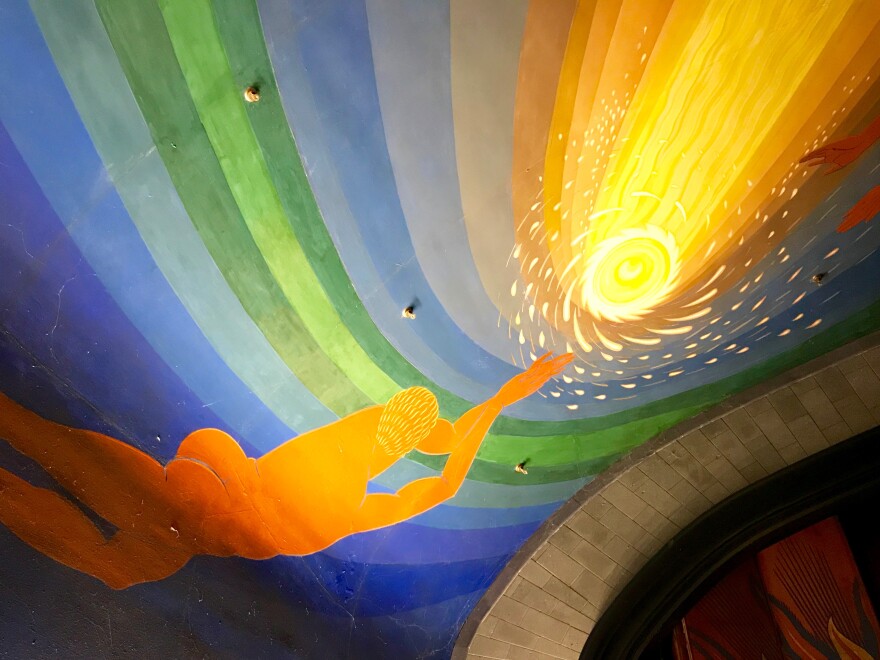The mural at the Cape Cinema movie theater is one of the Cape’s largest, most unusual works of art.
The Cape Cinema opened in June, 1930. It was built by Raymond Moore, who had established the Cape Playhouse in 1926, then decided to build a movie theater nearby.
Eric Hart is the current owner of the Cape Cinema business. He said Raymond Moore was a grandiose person with a lot of big ideas.
“He was actually able to execute these ideas. I mean, who gets to do that?” said Hart.
Moore was able to indulge his passion for theater and movies because he was married to a wealthy New York heiress.
“He didn’t have any money – his wife had the money and she went along with him doing these projects,” said Hart.
Moore wanted to make a bold statement, and decided to commission a large mural for the interior of the building. He hired New York-based artist Rockwell Kent.
“Kent had just published a beautiful illustrated version of Moby Dick, and was kind of like a rock star in the 1930s for a lot of scenic paintings in that he did around the world,” said Hart. “Rockwell Kent spent a lot of time in Greenland. In fact, he lived in Greenland with an indigenous native for a few years. Obviously, there’s not a lot to do in a place like Greenland, but there is one beautiful thing, and that’s the night sky. And Kent painted a number of works that were related to the night sky, and this is an example of that.”
Kent employed a well-known Broadway set designer, Jo Mielziner, to work with him on executing his design.
“It was painted in New York in one of Mielziner’s studios with his art students. I believe there are 8 or 10 individual strips, and they all fit together like a puzzle,” said Hart.
At 6,400 square feet, the mural covers the entirety of the theater’s curved ceiling, and was the largest indoor mural in the world when it was installed. It’s an abstract, impressionistic rendering of the heavens divided into three sections.

“The first section shows you kind of an impression of Taurus the Bull, and then the dog is another constellation in the sky. And then you look at the second section where there is a nude man and a woman. And they first meet each other – they come together and then part. And then, as you look to the third section, you see one of the figures is actually handing off light to the other figure. It’s sort of like the heavens are giving man the ability to shed light – maybe shed light on the screen itself… so you get the impression that a lot of this mural is also influenced by the fact that it’s going to be about a movie theater,” said Hart.
Rockwell Kent was at first reluctant to come to Dennis to supervise the installation of his work. He vowed never to set foot in Massachusetts after American anarchists Sacco and Vanzetti were executed in the state for the murder of two people during an armed robbery in Braintree. Kent eventually relented, however, arriving on the Cape shortly before the theater opened to check on the mural installation.
“Kent showed up here, and he was kind of upset with aspects of the mural. So that’s why he spent two or three days making some changes,” said Eric Hart. “And another thing that was interesting was that Jo Mielziner actually painted his own mural in the lobby. And Kent was so upset with that mural that he just painted over it. I think he wanted to be part of the whole project. It was like two clashing egos.”

Kent and Mielziner both signed the enormous mural, but the signatures are on opposite sides of the theater, perhaps reflecting that clash of egos. Although the mural was restored in the 1980s, years of moisture build-up since then has caused the plaster behind the colorful artwork to bubble in spots. Eric Hart is looking to raise funds for another restoration, and he estimates this one could take two to three years to complete.







